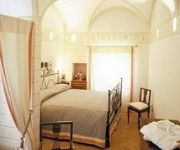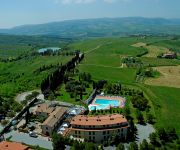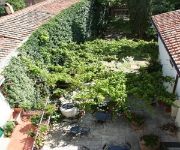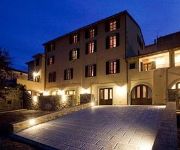Facts and Data
Webpages:
Official Unesco Page
Basis Data:
Unesco World heritage since: 2004
Size of heritage: 61,188 ha
- Buffer zone: 5,660 ha
Coordinates:
Longitude: 11,550°
Latitude: 43,067°
Summary
The landscape of Val d’Orcia is part of the agricultural hinterland of Siena, redrawn and developed when it was integrated in the territory of the city-state in the 14th and 15th centuries to reflect an idealized model of good governance and to create an aesthetically pleasing picture. The landscape’s distinctive aesthetics, flat chalk plains out of which rise almost conical hills with fortified settlements on top, inspired many artists. Their images have come to exemplify the beauty of well-managed Renaissance agricultural landscapes. The inscription covers: an agrarian and pastoral landscape reflecting innovative land-management systems; towns and villages; farmhouses; and the Roman Via Francigena and its associated abbeys, inns, shrines, bridges, etc.
Location on Map
Show bigger map on Openstreetmap
Val d'Orcia: A UNESCO World Heritage Site in Italy
The Val d'Orcia, located in the Province of Siena, Tuscany, is a picturesque and culturally significant region that has been recognized as a UNESCO World Heritage site since 2004. Spanning over 61,000 hectares, this enchanting landscape is renowned for its exceptional natural beauty, harmonious blend of man-made and natural elements, and its historical and cultural significance.
History
The Val d'Orcia has a rich history that dates back to ancient times. The Etruscans, an ancient civilization that thrived in central Italy, inhabited this region and left behind traces of their presence. The Romans also recognized the strategic importance of the area and established several settlements and villas here.
During the Middle Ages, the Val d'Orcia became a hub of economic and cultural activity. The powerful feudal lords, such as the Aldobrandeschi and Salimbeni families, controlled the region and built castles and fortresses that still stand today. The landscape was shaped by the agricultural practices of the time, with the cultivation of wheat, vineyards, and olive groves.
In the Renaissance period, the Val d'Orcia became a source of inspiration for artists and writers. The renowned painter, Ambrogio Lorenzetti, depicted the landscape in his frescoes in the Palazzo Pubblico in Siena, showcasing the harmonious coexistence between man and nature.
Current State
Today, the Val d'Orcia continues to captivate visitors with its timeless beauty and cultural significance. The landscape is characterized by rolling hills, cypress trees, vineyards, and picturesque medieval towns. The region's agricultural practices, including the cultivation of grapes for wine production and the production of Pecorino cheese, have been preserved for centuries.
The Val d'Orcia is home to several charming towns and villages, including Pienza, Montalcino, and Montepulciano. Pienza, a UNESCO World Heritage site in its own right, is known for its well-preserved Renaissance architecture and its delicious pecorino cheese. Montalcino is famous for its Brunello wine, while Montepulciano is renowned for its Vino Nobile.
Visitors to the Val d'Orcia can explore the region's cultural heritage by visiting its numerous castles, churches, and historic sites. The Castello di Montalcino, the Abbey of Sant'Antimo, and the Romanesque parish churches of San Quirico d'Orcia and Monticchiello are just a few examples of the architectural treasures that can be found in the area.
The Val d'Orcia also offers ample opportunities for outdoor activities and relaxation. The region is crisscrossed by hiking and biking trails that allow visitors to immerse themselves in the stunning natural surroundings. The thermal baths of Bagno Vignoni and Bagni San Filippo provide a rejuvenating experience, with their hot springs and therapeutic waters.
In conclusion, the Val d'Orcia is a UNESCO World Heritage site that showcases the harmonious coexistence between man and nature. Its rich history, breathtaking landscapes, and cultural heritage make it a must-visit destination for those seeking to immerse themselves in the beauty and charm of Tuscany.
Hotels and places to stay
Castello di Velona SPA Resort & Winery
Palazzo del Capitano Wellness & Relais
Villa del Capitano Luxury Art & Relais
Hotel Palazzuolo
Hotel Casa Lemmi
Residence Casanova
Hotel Dei Capitani
Podere il Tigliolo
Piombaia
Residenza Palazzo Saloni
Videos from the area
Videos provided by Youtube are under the copyright of their owners.














